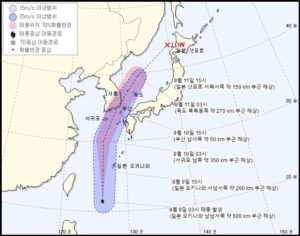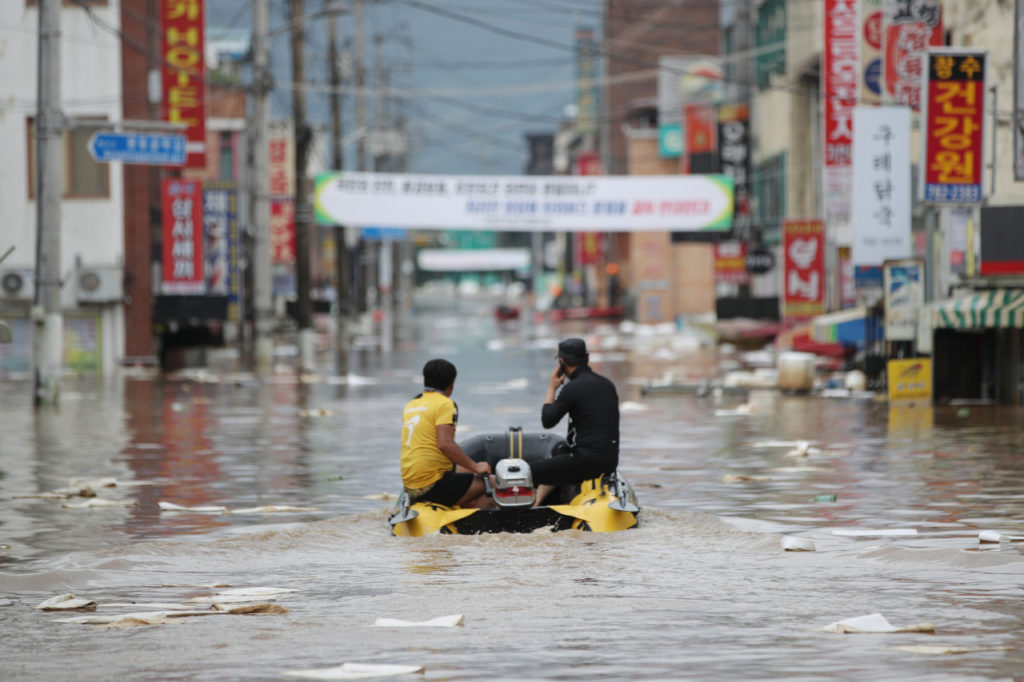
South Korea will come under the direct influence of Typhoon Jangmi, the season’s fifth typhoon, which will bring heavy rain to the country’s southeastern region already hammered by downpours and floods, the state weather agency said Sunday.
Formed early Sunday southwest of Okinawa, the tropical storm with a radius of 200 kilometers started to move northeast at a speed of 34 kilometers per hour, with an atmospheric pressure of 1,000 hectopascals at its center and a maximum wind speed of 18 meters per second.
It is expected to pass waters 350 km south of Jeju Island around 10 a.m. Monday, according to the Korean Meteorological Administration (KMA).
Around 3 p.m. on the same day, it is predicted to arrive in waters 50 km southwest of Busan, some 325 km southeast of Seoul, it said.
It will be this summer’s first typhoon to come to the Korean Peninsula. The name of Typhoon Jangmi was contributed by South Korea and means “rose” in Korean.
South Korea will experience rain over the coming days, while the typhoon will strike the southeastern region of South Gyeongsang Province and Jeju Island, with strong winds and heavy downpours.
The KMA said the central region will receive rainfall of 100-300 mm for the next two days due to a seasonal rain front and Typhoon Jangmi. Some areas are expected be battered by heavy downpours of up to 500 mm.
The southern part of the country will be directly affected by the typhoon, with estimated precipitation of 100-200 mm over the cited period. It will rain up to 300 mm in some parts of the region along the typhoon’s trajectory, according to the KMA.
The KMA advised people on the southeastern seaside to take extra precautions and be prepared for dangerous tides.
South Korea has been suffering from dayslong torrential rain amid the prolonged monsoon season that started in late June.
Over the last nine days, about 30 people have been killed and 12 have gone missing due to floods and landslides.
SOURCE: The Korea Herald by Yonhap
